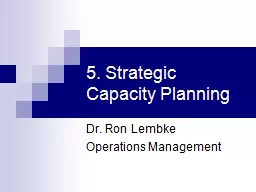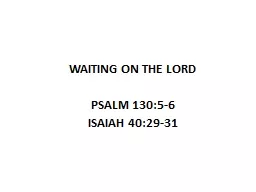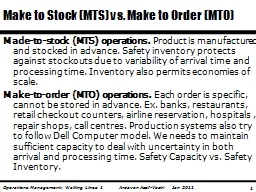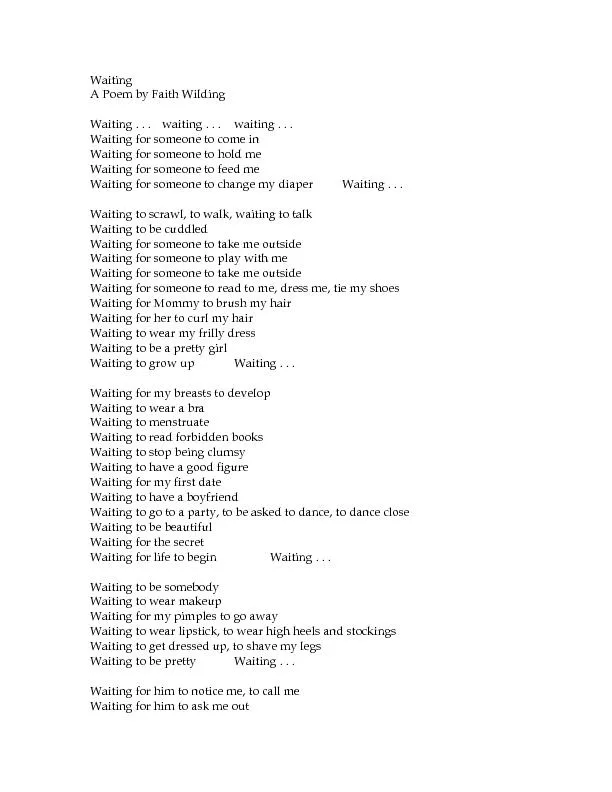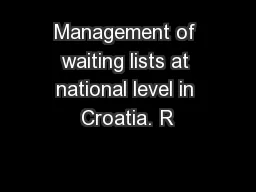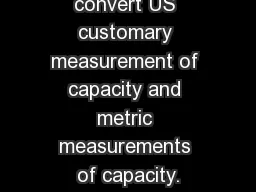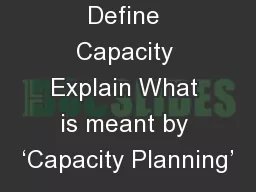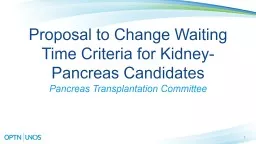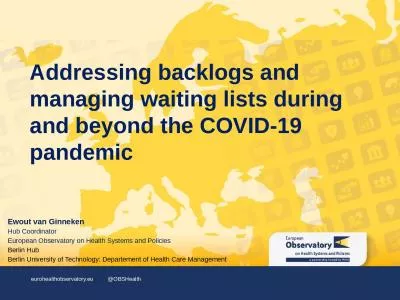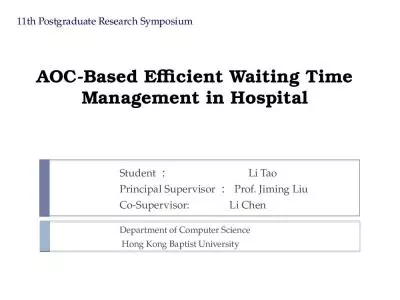PPT-5. Capacity and Waiting
Author : myesha-ticknor | Published Date : 2015-11-03
Dr Ron Lembke Operations Management How much do we have Design capacity max output designed for Everything goes right enough support staff Effective Capacity Routine
Presentation Embed Code
Download Presentation
Download Presentation The PPT/PDF document "5. Capacity and Waiting" is the property of its rightful owner. Permission is granted to download and print the materials on this website for personal, non-commercial use only, and to display it on your personal computer provided you do not modify the materials and that you retain all copyright notices contained in the materials. By downloading content from our website, you accept the terms of this agreement.
5. Capacity and Waiting: Transcript
Download Rules Of Document
"5. Capacity and Waiting"The content belongs to its owner. You may download and print it for personal use, without modification, and keep all copyright notices. By downloading, you agree to these terms.
Related Documents

